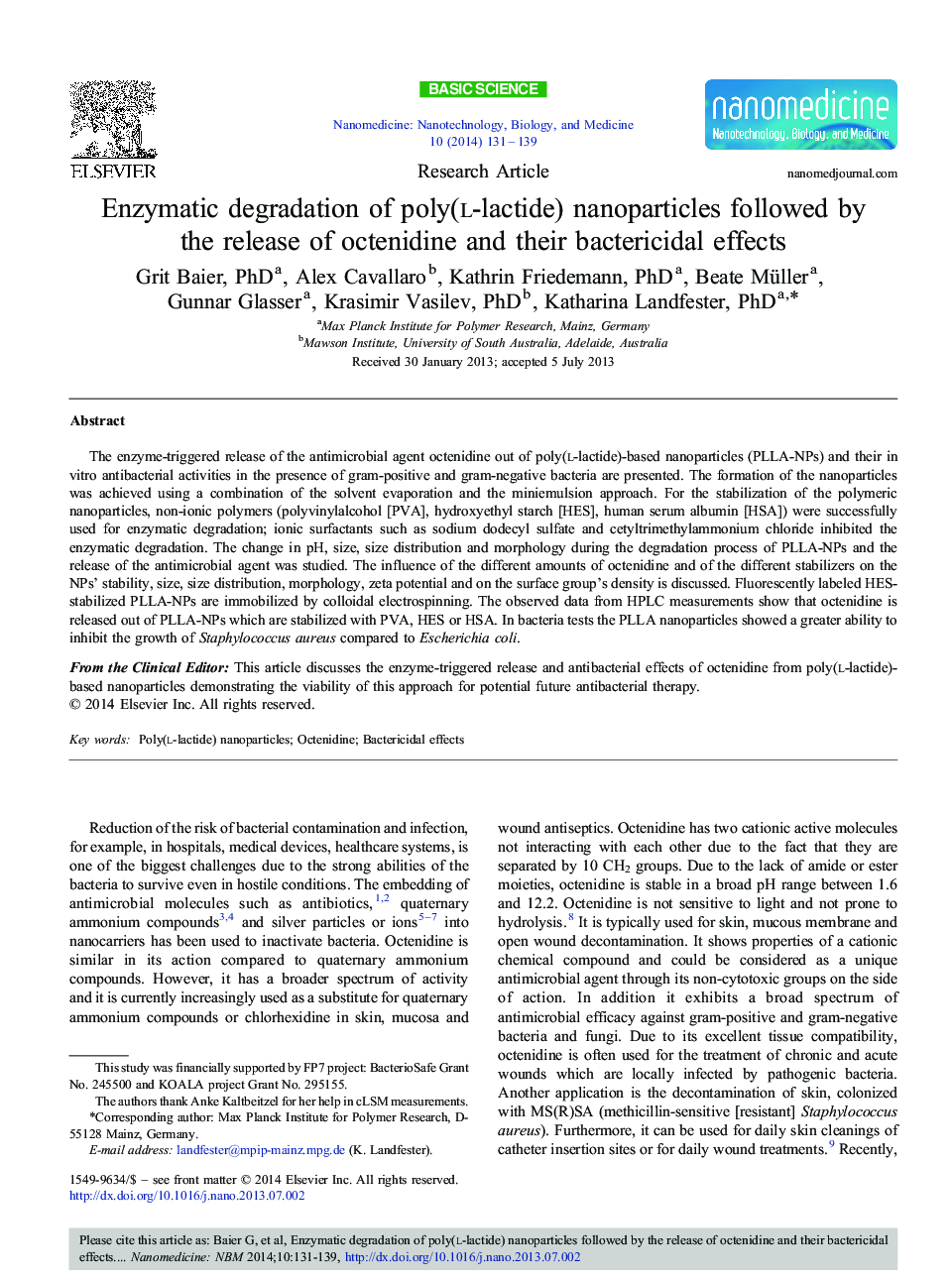| کد مقاله | کد نشریه | سال انتشار | مقاله انگلیسی | نسخه تمام متن |
|---|---|---|---|---|
| 877474 | 911029 | 2014 | 9 صفحه PDF | دانلود رایگان |
The enzyme-triggered release of the antimicrobial agent octenidine out of poly(l-lactide)-based nanoparticles (PLLA-NPs) and their in vitro antibacterial activities in the presence of gram-positive and gram-negative bacteria are presented. The formation of the nanoparticles was achieved using a combination of the solvent evaporation and the miniemulsion approach. For the stabilization of the polymeric nanoparticles, non-ionic polymers (polyvinylalcohol [PVA], hydroxyethyl starch [HES], human serum albumin [HSA]) were successfully used for enzymatic degradation; ionic surfactants such as sodium dodecyl sulfate and cetyltrimethylammonium chloride inhibited the enzymatic degradation. The change in pH, size, size distribution and morphology during the degradation process of PLLA-NPs and the release of the antimicrobial agent was studied. The influence of the different amounts of octenidine and of the different stabilizers on the NPs' stability, size, size distribution, morphology, zeta potential and on the surface group's density is discussed. Fluorescently labeled HES-stabilized PLLA-NPs are immobilized by colloidal electrospinning. The observed data from HPLC measurements show that octenidine is released out of PLLA-NPs which are stabilized with PVA, HES or HSA. In bacteria tests the PLLA nanoparticles showed a greater ability to inhibit the growth of Staphylococcus aureus compared to Escherichia coli.From the Clinical EditorThis article discusses the enzyme-triggered release and antibacterial effects of octenidine from poly(l-lactide)-based nanoparticles demonstrating the viability of this approach for potential future antibacterial therapy.
The antimicrobial agent octenidine was encapsulated in poly(l-lactide) nanoparticles through a combination of the solvent evaporation and the miniemulsion process. For the first time the polymeric particles were stabilized with non-ionic biomolecules (hydroxyethyl starch, human serum albumin). The enzyme-triggered release and the in vitro antibacterial activities of the poly(l-lactide) nanoparticles in the presence of gram-positive and gram-negative bacteria are studied and discussed. Due to their antimicrobial properties, poly(l-lactide) nanoparticles have a great potential to be used in the biomedical field.Figure optionsDownload high-quality image (130 K)Download as PowerPoint slide
Journal: Nanomedicine: Nanotechnology, Biology and Medicine - Volume 10, Issue 1, January 2014, Pages 131–139
